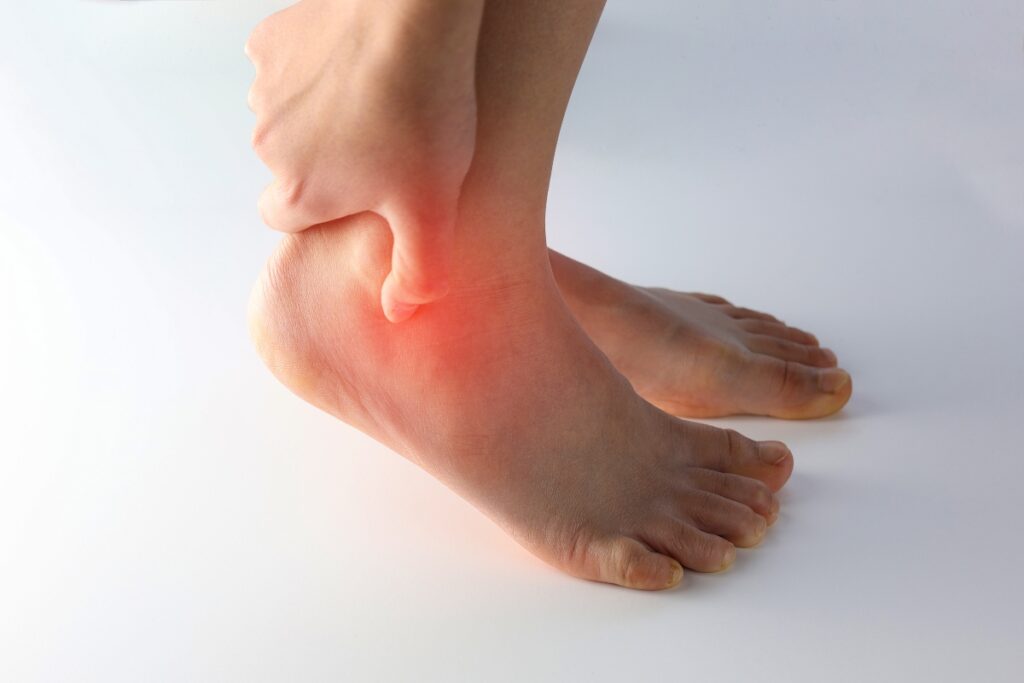Do You Suffer From Tendinosis?
Tendons are crucial components of our musculoskeletal system. They allow us to make the intricate movements we use every day. Tendons are fibrous cords that attach our muscles to our bones. When they are compromised, this condition is called tendinosis.
We aim to provide a comprehensive look at tendinosis, focusing on its symptoms first. If you or a loved one have these symptoms, consider talking to a medical professional. Then, we will discuss the causes, impact, and treatment options for tendinosis.
Introduction to Tendinosis: Understanding the Condition
Tendinosis occurs when the tendons experience degeneration, commonly due to repetitive trauma or inadequate healing from a previous injury.
Unlike tendonitis, which is characterized by inflammation, tendinosis involves the breakdown of collagen fibers within the tendon. This can lead to pain and impaired function over time and requires more time to heal. Understanding this distinction is key to recognizing and managing the condition effectively.
It’s common for people to confuse the two conditions, so you should always consult a medical professional.
Tendinosis Symptoms: How to Identify the Condition
Identifying signs of tendinosis early can significantly improve outcomes. Key symptoms to watch for include:
- Persistent Pain: Aching or burning pain around the affected tendon. The pain will often worsen with activity and improve with rest.
- Stiffness: The affected area will experience a reduced range of motion and stiffness in the affected joint. This is most common after periods of inactivity.
- Swelling: While less common than in cases of tendonitis, some swelling may still be present around the affected tendons and/or joints.
- Thickening of the Tendon: Noticeable thickening or nodules along the tendon.
- Weakness: You may experience decreased strength in the affected muscle. This will make it difficult to perform specific tasks or exercises that include the use of that tendon.
Differentiating Tendinosis from Tendonitis
Tendinosis and tendonitis are often confused due to their similar-sounding names and overlapping symptoms. However, they are fundamentally different conditions:
- Tendonitis: This is an acute condition involving inflammation of the tendon. It is commonly caused by a sudden injury or overuse of the tendon. Symptoms include pain, swelling, and warmth around the affected area.
- Tendinosis: This is a chronic condition characterized by the degeneration of the tendon’s collagen. There is typically no inflammation, but there came to be. It’s more common for those suffering from tendinosis to experience thickening and weakening of the tendon, which causes persistent pain and stiffness.
The lack of inflammatory cells in tendinosis differentiates it from tendonitis, making targeted diagnosis and treatment essential.
Causes of Tendinosis: Overuse and Other Contributing Factors
Tendinosis is primarily caused by overuse and repetitive strain on the tendons. Other contributing factors include:
- Age: As time goes on, the elasticity of your tendons will decrease. This makes older adults more susceptible to developing this condition.
- Improper Technique: Poor form during exercise or daily activities can place undue stress on your tendons.
- Inadequate Recovery: Not resting enough between strenuous activities can prevent your tendons from healing properly.
- Previous Injuries: Tendons that have been previously injured but did not heal properly are at higher risk.
The Impact of Tendinosis on Athletes and Fitness Enthusiasts
For athletes and fitness enthusiasts, tendinosis can be particularly debilitating. The condition not only impairs performance but can also lead to long-term damage if not addressed promptly.
Areas commonly affected include:
- The Achilles tendon
- Patellar tendon
- Tendons in the shoulder and elbow
Chronic pain and reduced function will get in the way of even the most active people. This is why it’s important to emphasize early detection and intervention.
Diagnosis and Treatment Options
Proper diagnosis typically involves a combination of:
- Medical history
- Physical examination
- Imaging studies such as ultrasound or MRI to assess tendon degeneration
Platelet-Rich Plasma (PRP) Injections
PRP injections involve extracting a small amount of your blood. Then, we concentrate the platelets in your blood before injecting them into the affected tendon.
Platelets contain growth factors that promote healing and tissue regeneration. PRP has shown promise in reducing pain and improving function in tendinosis patients, making it a popular choice among athletes and active individuals.
Physical Therapy and Exercises
Physical therapy is a cornerstone of tendinosis treatment, even after PRP injections. It’s important to have a tailored program focusing on eccentric exercises that lengthen the muscle while it contracts.
Stretching and strengthening can help restore tendon health and prevent future injuries. Therapists may also use techniques such as ultrasound therapy, soft tissue massage, and dry needling to enhance recovery.
Changes in Activity and Lifestyle
Adjusting activity levels and modifying techniques is crucial to allowing the tendon to heal and prevent further damage. This may involve switching to low-impact exercises, ensuring proper warm-up and cool-down routines, and incorporating adequate rest periods into training schedules.
Contact Northeast Knee & Joint Institute For Treatment For Tendinosis and Tendon Injury Recovery
Tendinosis can be a challenging condition to manage, but early detection and appropriate treatment can significantly improve outcomes. By understanding the symptoms, causes, and available treatment options, you can take proactive steps to address tendinosis and prevent long-term damage.
If you’re looking for non-invasive treatments for your tendinosis, contact the Northeastern Knee & Joint Institute to schedule a consultation.
